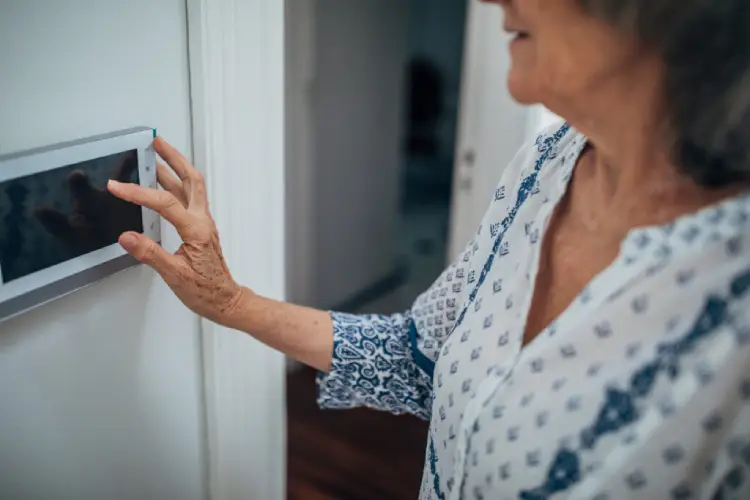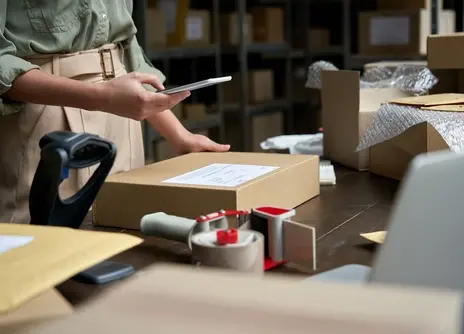The use of smart home technology to help older and disabled people live more independent lives is being held back by a “lack of ambition and vision” among local authorities and the NHS, according to a report by the Policy Connect think tank. The Smarter Homes for Independent Living report calls on public bodies to grasp the opportunities that the technology such as the internet of things (IoT) offers adult social care, while technology companies need to design smart home devices with older and disabled people’s needs in mind.

How can IoT help adult social care?
Smart home technology, the largest segment of the IoT market according to Statista, “gives rise to new opportunities for disabled and older people” who want to have more control over their domestic environments, the Policy Connect report argues.
“Independent living has long been a key tenet of the disability rights movement,” said Clive Gilbert, the report’s author. “With appropriate support from carers, family members and friends, smart home technology promises to give people more choice and control in their lives.”
For example, IoT can help people with reduced mobility to control their lighting, heating and other fixtures through a single accessible device. Smart home technology can also help people remain “socially engaged and connected to their communities” through services such news websites, entertainment streaming services and video conferencing.
IoT can also protect vulnerable people by remotely detecting accidents or unsafe situations, the report says, and by allowing users to call for help when needed. A trial project in Sutton, in South London, rolled out 150 IoT sensors to help provide remote social assistance to older residents. One service user says the system saved her life, according to a video produced by the council earlier this year.
Emerging technologies such as AI and robotics can also support independent living. Spain’s AmbienNet project, for examples, has proposed an indoor navigation system for older people to help them move around the home and perform everyday tasks. And Bath-based charity, Designability has built a prototype social care robot called JUVA, which helps with tasks including meal preparation, dressing and undressing.
Smart homes for assisted living: ‘fragmented funding’
Despite these opportunities, both the public and private sector have “failed to respond” to the needs of disabled and elderly people when it comes to assistive technology, Policy Connect argues.
As well as a lack of ambition from the NHS and local authorities, public procurement processes are hampered by “fragmented funding, a shortage of high-quality evidence and a lack of involvement of older and disabled people in decision making”.
Meanwhile, companies that develop smart home lack sufficient knowledge of the needs of older or disabled people, the report found. “Many technology developers do not understand the needs of disabled and older people and often assume they are too difficult to reach,” it says. “Some of the difficulty may be related to a lack of understanding of the challenges associated with disability and older age.”
Policy Connect advises that a more “holistic approach” to assistive technology for independent living would empower people, while reducing financial pressure on the social care system.
National and local government should reform technology procurement to “enshrine the principles of independent living”, it argues. Local authorities should “establish adult social care co-production groups” including disabled people and technology experts to oversee the local delivery of the independent living technology, and central government should introduce standards for independent living technologies, providing “practical support” for technology innovation.
“The Department for Business Energy and Industrial Strategy should implement its commitment to promote innovation and assistive technology by developing (with UK research innovation) an Independent Living Technology Innovation Mission aimed at ensuring and accelerating the arrival of new technologies for the home on the market,” says the report.
These recommendations could help “millions of disabled and older people” lead more independent and fulfilling lives, said Gilbert.
Funding IoT innovation for adult social care
Dr Peter Bloomfield, head of policy and research at healthcare think tank Future Care Capital, agrees that the UK’s assistive technology ecosystem needs improvement. “The cost of independent living is very poorly funded overall,” he told Tech Monitor today.
Consumer smart home devices can be expensive and are not typically designed with older or disabled people in mind, he says. Meanwhile, smart home devices designed to support independent living have not received much investment. Research by Future Care Capital has found that companies developing home care systems received an average of £800,000 investment, compared to £3.7m for those working on mental health care solutions.
Last year, the UK government pledged £150m to support digitisation in adult social care, but Bloomfield says there is a concern that little of this will go towards assistive technology.
As well as funding, Bloomfield argues the government has a role to play in connecting technology developers to the needs of users. "There needs to be a very clear engagement plan for the sector really, not just with users and carers, but with the technology developers themselves," he explains. "Everyone [needs to be] communicating effectively so that the best technology is the one reaching the market because that's not really happening at scale at the moment."
Innovation around independent living technology is happening in "individual pockets", adds Bloomfield, which have produced some successful pilots and small trials. But so far it has struggled to reach widespread adoption. "This is where the government can really intervene, step in and say "Okay, let's facilitate this technology across that gap."




